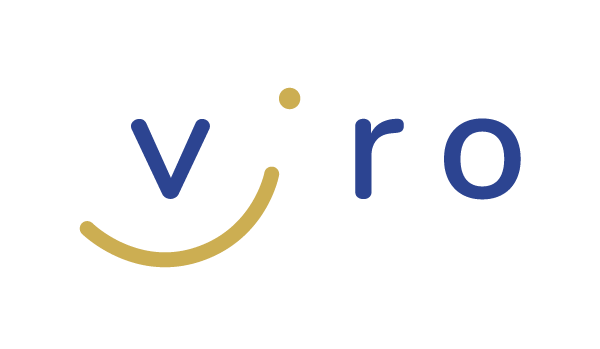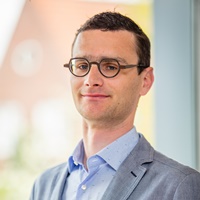Viro vzw has been a merger vzw of 3 Bruges-based organisations active in the sector for people with disabilities since 2018. For the past 2 years, the new merger vzw has been working hard and in the course of 2019, the new organisation took colour and shape. In 2020, Viro vzw was keen to take further steps in strategic development. The organisation wanted to define a clear, strategic compass for the future against which (strategic) choices could be measured. Taking into account the rapidly changing aid landscape and inspired by the strategic objectives, a new and flexible organisational structure was also outlined. Möbius guided the organisation through this process. We listened to Viro vzw at the end of the process to hear how they experienced the project and what results emerged.
Interview with Koen Dalle, general manager of Viro asbl, on their strategic trajectory and the new agile organisational structure following the merger asbl.
What can you tell us about Viro vzw?
Viro vzw is a Bruges-based organisation in the care of people with disabilities. We are a young organisation that consists of a merger of 3 organisations that have joined forces. The name 'Viro' means human in Esperanto. This name is not accidental, because by working together we want to respond even better to what clients want and need. We want to be value-oriented and people-focused.
We have about five locations spread out in Bruges and thus have a reach across Northwest Flanders, so we do not limit ourselves to Bruges alone. We are a medium-sized organisation: we employ 160 people and have about 400 clients. Our clients are people with disabilities. We offer a lot of different forms of support: residential forms, day support, mobile/ambulatory support, ...
The merger started in 2018, what has changed since then?
Over the past six years, we have noticed a lot of enthusiasm in our sector, partly because the care landscape has changed under the impetus of person-centred financing. Surely this has brought about a lot, including a huge liberalisation of the market with the entry of new initiators. Pretty soon, therefore, we felt we had to find new partnerships to position ourselves in the region, realise clout and be more meaningful to our clients. The partnership between the 3 organisations culminated fairly quickly in a merger, driven in part by the 3 governing bodies and their positive dynamics. After all, they have to define the contours and outlines of the new organisation. This constitutes good preparation for the way forward.
We did not opt for organic growth, but quickly made some clear choices. For instance, we established a common counter: 1 entry point for Viro vzw on the client's side. Secondly, we grouped and centralised all (care) support services as a function of efficiency. We made a lot of efficiency gains and these gains are then converted into function of care on the work floor. Finally, we also set up the V-ION support team that provides substantive support and is always looking for vision, connection and innovation within the organisation. So we have chosen speed. And we are very happy with that. It has been hard work to look for connection and dialogue. Gradually, the benefits of the merger became visible to each and every one of us.
A strategic compass was drawn up and the new organisational structure was shaped. What process did you go through?
After the mission/vision process, we soon realised that the organisation also needed a strategic compass to judge (future) choices against. We needed concrete objectives. After the merger, we also set up a provisional organisational structure, but that was a temporary design and not sustainable. We therefore decided fairly quickly to engage an external consultant to guide us through this process.
What are the main outlines of this new strategy and organisational structure?
We formulated some 10 objectives in which we focused on our target group and service content, the intended growth and the way of cooperation, our personnel policy and, finally, entrepreneurship. In each case, we expressed our ambition, but we also looked at what we would like to secure. One of the important elements is that we want to remain and become the logical choice for clients and employees in the wider Bruges region. The focus on growth was also an important trigger for me. Because our external environment remains enormously volatile. Indeed, connection and intersectoral collaborations will be the challenges of tomorrow. We also emphasised innovation. We don't want to be common sense. For instance, we also want to reinvest a positive result in care innovation projects or we have set up a cooperative in which family members of clients have invested. Surely this is unique in the region and in this way we can continue to make a difference.
For the new organisational structure, we mainly opted for an innovative model, but with simplicity and which closely matches the prevailing culture within Viro vzw. We opted for a flat organisational structure, with a focus on self-activity and a sense of responsibility on the part of employees, that makes use of talents and enthusiasm and with an approachable management. We have also created equality between the various departments and ensured interaction and connection within a strong Viro framework. Everyone in the organisation is also assigned a specific role. We are really quite proud of our new structure. It is a fluid and flexible model that is close to the shop floor, with few layers and will work bottom-up.
In what ways has Möbius been able to contribute to this?
We opted for a fast process. And Möbius drew up a thorough plan of action for this. We put together a strategic working group. This group consisted of directors, board members and staff members. This strategic working group formulated the objectives and outlined the organisational structure. But we were inspired. We hebben een brede interne bevraging georganiseerd binnen de organisatie en zo aan een grote groep van medewerkers gevraagd om mee na te denken. Hiervoor gebruikten we het Howspace platform. Dit platform creëerde een positieve dynamiek en bracht heel wat waardevolle input. Daarnaast hebben we ook een brede externe bevraging georganiseerd bij welzijnsverenigingen in de brede regio van Brugge. In this way, we explored possible partnerships or networking in the neighbourhood. We will now continue working on this.
What was the added value of this external guidance?
Möbius helped us in a professional way and works customer-oriented and demand-driven. I really did remember that. Möbius managed and guided the process well, which was necessary at this stage. We regularly received fresh inspiration and the consultants allowed the process to grow organically and scenario-based.
How do you see the future of Viro vzw?
I see it as positive, despite the turbulent times. There are many challenges waiting for us. And there will be opportunities to grow. We are also responding to this by finding and setting up new venues. I think we are very keen to approach some niches, such as tourism. We will also continue to look for networking and do so from a very inviting and open attitude. That way we can share our knowledge and expertise. We are open to partnerships.



